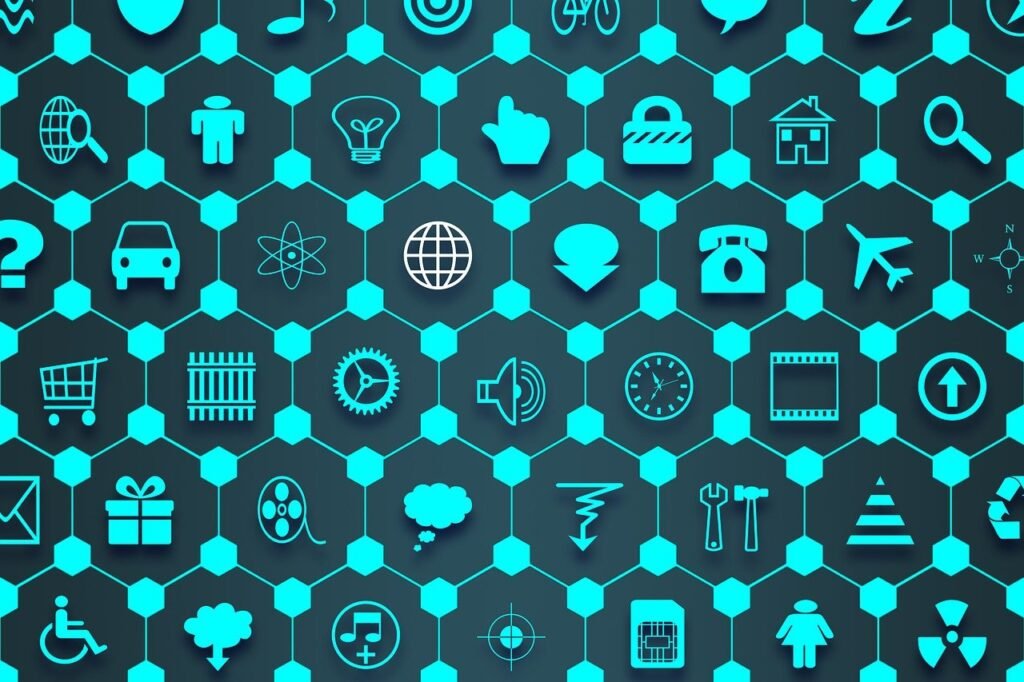Are you ready to shed some light on the ever-evolving world of smart lighting? This article takes you on a journey through the latest trends in smart lighting technology and how it is revolutionizing the way we illuminate our homes and workspaces. From voice-controlled systems to customizable color schemes and energy-efficient solutions, the world of smart lighting is constantly evolving to enhance our lives and create a more sustainable future. So, join us as we explore the fascinating possibilities of embracing these innovative trends and transforming the way we experience light.
Introduction
Welcome to the world of smart lighting! In this comprehensive article, we will dive deep into the fascinating realm of smart lighting, exploring its definition, functionality, benefits, and current state in the industry. We will also be discussing the key factors driving the trends in smart lighting, including advancements in technology, energy efficiency, convenience, integration with other smart devices, and environmental sustainability. So, sit back, relax, and get ready to illuminate your knowledge about smart lighting!
Understanding Smart Lighting
What is smart lighting?
Smart lighting refers to the use of advanced technology and connectivity to control and manage lighting fixtures in a more intelligent and efficient manner. Unlike traditional lighting systems that require manual operation, smart lighting allows you to remotely control and automate your lighting settings through various devices such as smartphones, tablets, voice assistants, or even motion sensors.
How does smart lighting work?
Smart lighting systems are built upon the Internet of Things (IoT) concept, where lighting fixtures are equipped with wireless connectivity and sensors. These sensors detect ambient conditions such as motion, light intensity, or occupancy, enabling the system to make informed decisions regarding lighting adjustments. By utilizing smart lighting apps or voice commands, you can easily customize and control your lighting to suit your needs and preferences.
Benefits of smart lighting
Smart lighting offers a multitude of benefits that go beyond traditional lighting systems. Firstly, it provides enhanced convenience by allowing you to control the lighting of your home with ease, whether you are in the same room or miles away. Additionally, smart lighting can contribute to energy efficiency and cost savings by intelligently adjusting lighting levels based on occupancy or natural lighting conditions. Furthermore, the integration of smart lighting with other devices in a smart home ecosystem opens up endless possibilities for automation and customization. Lastly, smart lighting’s sustainable design promotes environmental responsibility by reducing energy consumption and utilizing energy-efficient technologies.

Current State of Smart Lighting
Status quo of smart lighting industry
The smart lighting industry has witnessed remarkable growth in recent years and continues to evolve rapidly. With advancements in technology, increased consumer awareness, and growing demand for energy-efficient solutions, smart lighting is no longer a niche market but rather an integral part of modern homes and buildings.
Common smart lighting technologies
Various technologies serve as the backbone of smart lighting systems. Wi-Fi, Bluetooth, and Zigbee are some of the popular wireless connectivity options used to connect lighting fixtures to control devices. These technologies facilitate seamless communication between different components of the smart lighting system, enabling remote control and automation.
Popular smart lighting brands
Several renowned brands have made their mark in the smart lighting industry. Philips Hue, LIFX, and Nanoleaf are among the leading brands known for their innovative and feature-rich smart lighting products. These brands offer a wide range of lighting options, from color-changing bulbs to stylish panels, catering to diverse consumer preferences.
Market size and growth projections
The market for smart lighting has experienced exponential growth in recent years and is projected to expand further in the coming years. According to market research reports, the global smart lighting market was valued at approximately $12 billion in 2020 and is expected to reach a staggering $56 billion by 2026. This growth can be attributed to factors such as increasing awareness about energy conservation and the rising adoption of smart home technologies.
Key Factors Driving Smart Lighting Trends
Advancements in IoT and connectivity
The continuous advancements in IoT and wireless connectivity have played a major role in shaping the smart lighting landscape. The growing number of interconnected devices and the ease of wireless communication have made it possible to control and automate lighting systems effortlessly. The seamless integration of smart lighting into the larger smart home ecosystem has made it a sought-after technology for homeowners.
Energy efficiency and cost savings
One of the primary drivers of smart lighting trends is the focus on energy efficiency and cost savings. With the ability to adjust lighting levels based on occupancy, natural lighting conditions, or time of day, smart lighting systems can significantly reduce energy consumption. This not only helps in decreasing electricity bills but also contributes to a sustainable future by conserving resources.
Enhanced convenience and automation
Smart lighting offers unparalleled convenience and automation capabilities. Through the use of intuitive apps or voice assistants, you can easily control your lighting settings without the need for physical switches or dimmers. Whether it’s turning lights on/off, adjusting brightness, or setting predefined lighting scenes for different occasions, smart lighting simplifies the way we interact with our lighting systems.
Integration with other smart home devices
The ability to integrate seamlessly with other smart home devices is another crucial factor driving smart lighting trends. By connecting smart lighting systems with other devices such as thermostats, security systems, or entertainment systems, you can create a fully synchronized and intelligent home environment. Imagine lights automatically dimming when you start watching a movie or turning on when you enter a room. Such integrations enhance the overall functionality and convenience of your smart home.
Environmental sustainability
As the world becomes more conscious of environmental issues, the demand for sustainable solutions like smart lighting has surged. Smart lighting systems incorporate LED technology, which consumes significantly less energy compared to traditional incandescent bulbs. Additionally, smart sensors and algorithms optimize energy usage by adjusting lighting levels based on natural light availability and occupancy. This commitment to energy efficiency and sustainable design positions smart lighting as a key driver for a greener and more responsible future.

1. Integration with Voice Assistants and Smart Home Systems
Growing popularity of voice control
Voice control has emerged as one of the most popular methods for users to interact with their smart lighting systems. Voice assistants such as Amazon Alexa, Google Assistant, and Apple Siri have gained widespread adoption, allowing users to control their lights effortlessly using simple voice commands. Whether it’s turning lights on/off, dimming them, or creating custom lighting scenes, voice control offers a hands-free and intuitive way to interact with your smart lighting.
Compatibility with major voice assistants
Smart lighting systems have recognized the importance of compatibility with major voice assistants, ensuring a seamless user experience. Leading brands like Philips Hue, LIFX, and Nanoleaf provide native integration with popular voice assistants, enabling you to control your lights through voice commands without relying on separate apps or platforms. This compatibility allows users to harness the full potential of their smart lighting systems and create personalized, voice-controlled lighting experiences.
Smart lighting as part of overall smart home ecosystem
Smart lighting plays a crucial role in the broader smart home ecosystem, and its integration with other smart home devices is a key factor driving the trend. By connecting smart lighting systems with devices like smart thermostats, door locks, or security cameras, you can create complex automation routines that enhance home security, energy efficiency, and convenience. For example, when you unlock your front door, the smart lighting system can automatically turn on the lights in the hallway to welcome you home.
Growth in demand for interoperability
As the number of smart devices in our homes continues to increase, the demand for interoperability is growing. Users today expect their smart lighting systems to seamlessly integrate and communicate with other smart home devices from different brands. In response to this demand, industry players are working towards establishing interoperability standards and protocols. This trend enables users to mix and match devices from different manufacturers, fostering a more open and flexible smart home ecosystem.
2. Wireless Connectivity and Interoperability Standards
Wi-Fi, Bluetooth, and Zigbee connectivity options
Wireless connectivity is a crucial aspect of smart lighting systems, and different connectivity options are available to suit varying needs. Wi-Fi, being ubiquitous and widely adopted, offers a reliable and robust connection for controlling smart lighting. Bluetooth, on the other hand, provides short-range connectivity ideal for localized control, such as within a single room. Zigbee, a low-power, mesh networking technology, is commonly used for connecting multiple smart devices throughout a home. Each connectivity option has its strengths and use cases, and smart lighting systems often support multiple options for enhanced flexibility.
Interoperability between different smart lighting brands
Interoperability between different smart lighting brands allows users to build a cohesive and unified lighting experience across their homes. By adhering to common protocols and standards, smart lighting systems from different manufacturers can seamlessly communicate and operate in sync. Initiatives like the Zigbee Alliance’s Project Connected Home over IP aim to establish a unified standard that enables interoperability between various smart home devices, including smart lighting, making the integration process simpler for consumers.
Emerging wireless protocols and standards
While Wi-Fi, Bluetooth, and Zigbee are established wireless protocols for smart lighting, new emerging standards are constantly evolving. Thread, for instance, is an IP-based wireless networking protocol that enables reliable and secure communication between various smart devices. This protocol focuses on low power consumption and mesh networking capabilities, making it suitable for smart lighting applications. The continuous development of new wireless protocols and standards not only enhances connectivity options but also drives innovation and interoperability in the smart lighting industry.

3. Adaptive Lighting and Personalization
Dynamic color temperature adjustment
Adaptive lighting refers to the ability of smart lighting systems to adjust the color temperature of the lights based on the time of day or user preferences. Color temperature determines the warmth or coolness of light, and with adaptive lighting, you can mimic natural daylight indoors by gradually shifting from warm to cool or vice versa. This feature is especially beneficial for promoting better sleep and maintaining circadian rhythm, as it helps regulate melatonin production and alertness throughout the day.
Circadian rhythm synchronization
Circadian rhythm synchronization is a significant factor in achieving optimal health and well-being. Smart lighting systems can synchronize with our natural circadian rhythms, mimicking the changing light conditions throughout the day. By gradually adjusting the color temperature and intensity of the lights, it can promote wakefulness in the morning, enhance productivity during the day, and create a relaxing ambiance in the evening, ultimately leading to improved sleep quality and overall wellness.
Personalized lighting presets and moods
With smart lighting, you have the power to personalize your lighting environment according to your preferences and moods. By creating custom lighting presets and scenes, you can instantly transform the ambiance of a room for different activities or occasions. Whether it’s a cozy warm light for movie nights, a bright white light for productive work sessions, or a vibrant color-changing party mode, smart lighting allows you to customize the lighting experience to suit your desired atmosphere.
Smart lighting for health and well-being
Beyond aesthetics and convenience, smart lighting systems have immense potential in positively impacting our health and well-being. Lighting that synchronizes with our natural rhythm can regulate sleep patterns and boost mood and productivity. Moreover, personalized lighting can create visually stunning and engaging spaces, contributing to mental well-being and emotional comfort. The integration of smart lighting with features like adaptive lighting and circadian rhythm synchronization enables users to enjoy the full spectrum of benefits that smart lighting can provide.
4. Energy Efficiency and Sustainable Design
LED technology advancements
LED (Light Emitting Diode) technology has revolutionized the lighting industry with its energy-efficient and long-lasting properties. LED bulbs consume significantly less energy than traditional incandescent bulbs, thereby reducing electricity bills and carbon footprints. Moreover, LED bulbs have a longer lifespan, reducing the need for frequent replacements and further contributing to environmental sustainability. The continuous advancements in LED technology, such as improved efficiency and color accuracy, propel the trend towards energy-efficient and sustainable smart lighting solutions.
Smart sensors for energy optimization
Smart lighting systems incorporate various sensors that help optimize energy usage and maximize efficiency. Motion sensors detect human presence and adjust lighting accordingly, ensuring lights are only active when needed. Light sensors, also known as ambient light sensors, measure the amount of natural light in a room and adjust artificial lighting levels accordingly. These intelligent sensors work harmoniously with the smart lighting system to minimize energy waste and deliver the right amount of illumination at any given time.
Daylight harvesting and task-specific lighting
Daylight harvesting is a technique employed by smart lighting systems to take advantage of natural light and minimize reliance on artificial lighting. By leveraging light sensors and intelligent algorithms, smart lighting can automatically adjust the intensity and color temperature of lights based on natural light availability. Task-specific lighting is another energy-saving feature that allows users to illuminate specific areas within a room as needed. By providing focused and localized lighting, it prevents unnecessary energy consumption and enhances visual comfort for tasks such as reading, cooking, or working.
Lighting as a Service (LaaS) models
The lighting industry is witnessing a shift towards Lighting as a Service (LaaS) models, enabling customers to enjoy the benefits of smart lighting without the upfront costs. LaaS providers offer comprehensive lighting solutions that include installation, maintenance, and ongoing support for a fixed monthly fee. This subscription-based model allows businesses and homeowners to upgrade their lighting systems to energy-efficient and intelligent solutions without the capital investment and technical complexities. LaaS models promote affordability, scalability, and help accelerate the adoption of smart lighting technology.

5. Li-Fi and Visible Light Communication
Introduction to Li-Fi technology
Li-Fi, short for Light Fidelity, is an emerging wireless communication technology that utilizes visible light for data transmission. Unlike traditional Wi-Fi that uses radio waves, Li-Fi employs LED bulbs to emit rapid light fluctuations that can be detected and interpreted by specialized receivers. This technology offers several advantages over traditional wireless communication, including higher data transfer speeds, increased security, and reduced interference.
Advantages of Li-Fi over traditional Wi-Fi
Li-Fi technology has garnered significant attention due to its unique advantages over traditional Wi-Fi. The use of visible light for communication allows Li-Fi to achieve incredibly high data transfer speeds, potentially reaching multiple gigabits per second. This speed is unseen in traditional Wi-Fi networks, making Li-Fi highly suitable for data-intensive applications such as video streaming, virtual reality, or high-definition gaming. Additionally, Li-Fi’s reliance on light waves instead of radio waves provides enhanced security as light signals cannot penetrate solid objects, reducing the risk of unauthorized access or interference.
Potential applications of Li-Fi in smart lighting
Li-Fi technology holds immense potential for integration with smart lighting systems. By embedding Li-Fi capabilities in LED bulbs, smart lighting can not only provide illumination but also act as high-speed data communication hubs. This opens up possibilities for applications such as indoor positioning, data transfer in smart homes, or even creating communication networks in areas where radio frequency communication is restricted. The combination of smart lighting and Li-Fi can enable a truly connected and versatile ecosystem, creating novel and innovative solutions for various industries.
Conclusion
In conclusion, smart lighting has become an integral part of modern homes and buildings, offering enhanced convenience, energy efficiency, and endless possibilities for automation and customization. The key factors driving the trends in smart lighting include advancements in IoT and connectivity, focus on energy efficiency, integration with voice assistants and smart home systems, personalization and adaptive lighting features, and the emergence of wireless connectivity standards. Furthermore, the advancements in LED technology, smart sensors, and the potential of Li-Fi provide exciting prospects for the future of smart lighting. By embracing these ever-evolving smart lighting trends, you can transform your space into a connected, efficient, and sustainable haven of light. So, take the leap, experiment with different technologies, and see how smart lighting can illuminate your life like never before!



